
Cherry Blossom Season in Japan
March 31, 2018
After spending 2 days on Fraser Island, we can now say that we have done, at least once in our lives, the following things:
So let me explain how all this happened. Fraser Island is the world’s biggest island made entirely of sand – it’s about 120 km long and on average 15 km wide. Its initial inhabitants, the Aborigines, call it K’Gari, which means paradise. That’s already a quite compelling recommendation. Additionally, we had heard and read that it’s very beautiful, and there are countless tours of it offered by virtually all tourism operators in the area.
The logistics of visiting the island are, however, not simple. Either you book a tour and pay about half of your life’s savings for it, or you go on your own (and pay only about a quarter of your life’s savings). If you organize your own trip, you have to rent a specially approved off roader 4WD for it and be prepared to drive on sand, in very bad conditions. If you want to stay overnight, you have to book accommodation on the island, and, given how few accommodation options there are, you have to be prepared to pay the price for it. Lastly, you have to be prepared for an encounter with some of the wild dingoes living on the island, who are not always friendly. But, if you are prepared to do all this, the island rewards you with amazingly beautiful landscapes and memories that stay with you for a long while.
Naturally, we preferred to organize our visit to the island ourselves, rather than book a tour. We rented a big, old, loud, heavily used Land Rover. Before getting it, we had to watch a half hour video about safety on the island – it was like an exam of sorts that we had to pass before they actually gave us the car. The next day, we got ourselves and the car on the first ferry going to the island, which left the mainland at 6.45 AM – I think we were the only tourists on that ferry, everyone else was locals working on the island, so they were commuting to work.
Once we got off the ferry on the island, the “fun” began. At first, I couldn’t believe how bad the conditions for driving there were. I kept thinking that only the “road” that we were on was that bad, and that it would get better soon. But it didn’t – not for the 2 days we were on the island, which we spent mostly in the car. The “roads” in the inside of the island are basically tracks left in the sand by other cars. You go through these tracks and hope you don’t get stuck. On the way, there are tree roots, holes, ditches, tree branches, and you have to go through or over all of them somehow. It’s still a wonder to me that our car survived those conditions and that we didn’t get stuck anywhere. I guess it just confirms again Daniel’s driving skills (I didn’t even want to touch the steering wheel in those driving conditions…).
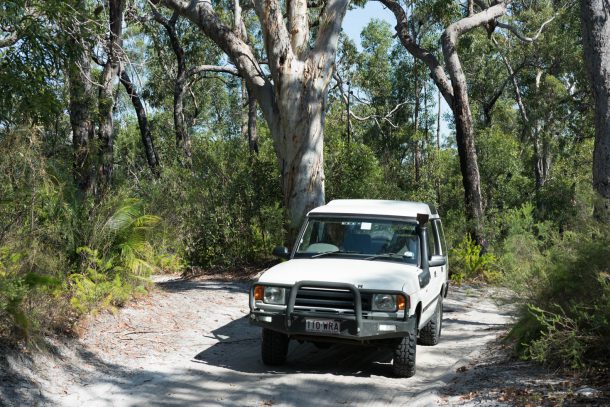
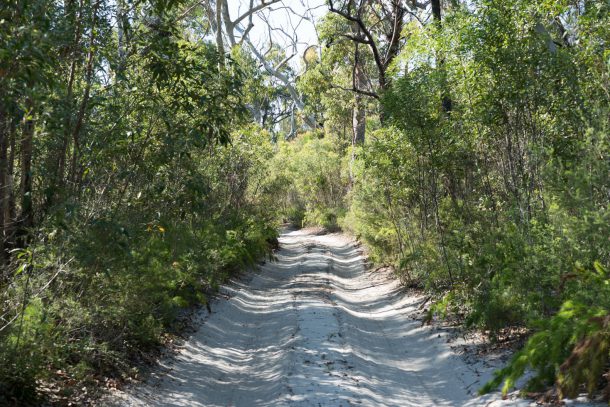
Once you cross the island like that, you get to the east beach, where you’re allowed to drive literally on the beach. The beach is about 50 m wide in most places, so space is not a problem. There are of course other cars driving around there, but you’re told (in the introductory video when renting the car) that the beach is just like any other “road”: you drive on the left and try not to crash into anyone else driving there. That’s it. Except for the fact that, of course, your car could get stuck in the sand at any moment, that cars are hard to control on sand, that you’re not allowed to drive in salty water so you have to always be careful to not drive where the waves reach the shore. Once you’re more or less comfortable with all that, driving on the beach can be quite fun and is definitely a unique experience.
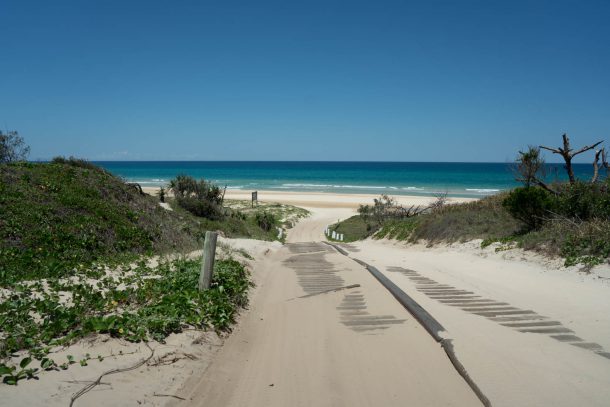
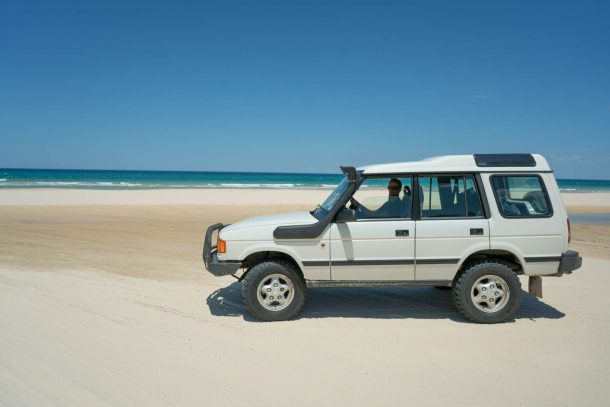

On our first day on the island, we drove about 50 km on the east beach to the north and then back again to our accommodation. On the way, we saw the wreck of a ship that was washed ashore by a cyclone in 1935, and has been disintegrating there since then.
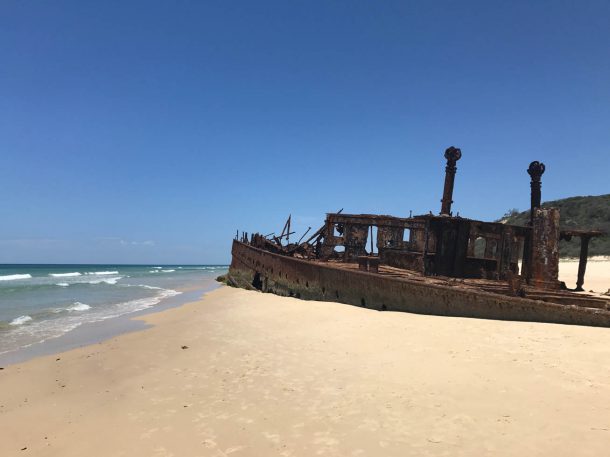

We also went to a lookout point on a small hill on the island, which provided beautiful views of the beaches and of the ocean. The shades of blue and green that the ocean water has here on sunny days still seem unreal to me.
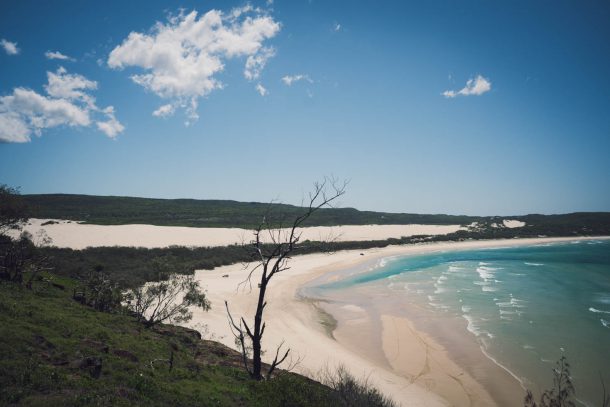
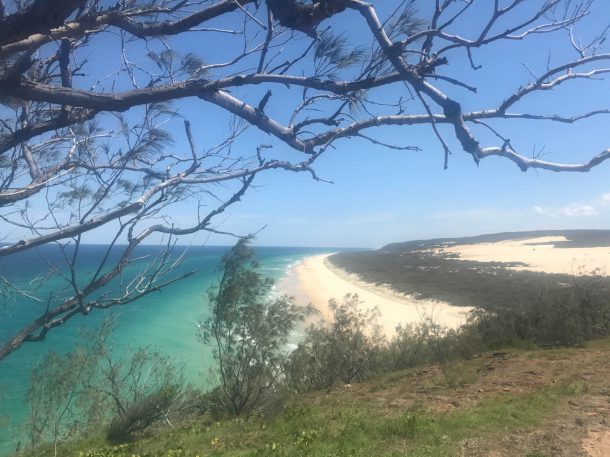

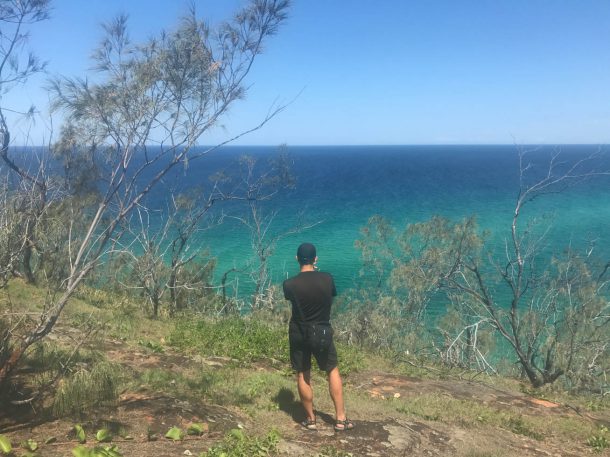
On our second day on the island, we went to some inland fresh water lakes. Unfortunately the weather was not as beautiful as it had been the day before, but we couldn’t miss the opportunity to go into the crystal clear water and hang out on the white sand beaches surrounding the lakes.

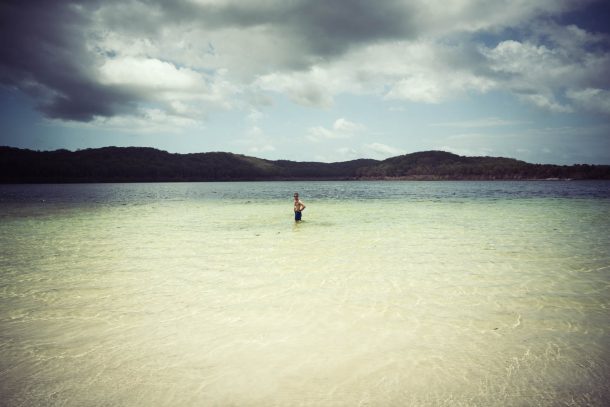

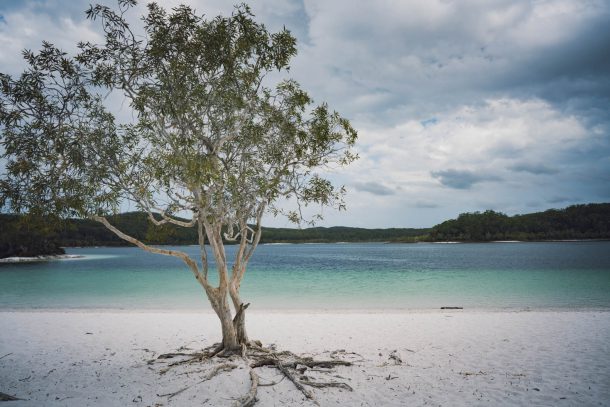
As for our accommodation for the night we spent on the island, Daniel wanted to camp, while I wanted a bit more comfort than normal camping offers (plus, we don’t have any camping equipment with us, so we would have had to buy or rent everything, which seemed just too complicated for only one night). So we found a solution that made us both happy: we were glamping (a word made from putting together “glamour” and “camping”), meaning we slept in a big and well-equipped fixed tent. This was part of the Beachcamp Eco Retreat and we both loved staying there. It was just about 50 m from the beach, so we fell asleep and woke up to the sound of the waves. The tents were really comfortable. There was a huge, well equipped kitchen. We met a nice older Australian couple staying in the same place, whose car had go stuck on one of the inland “roads”.
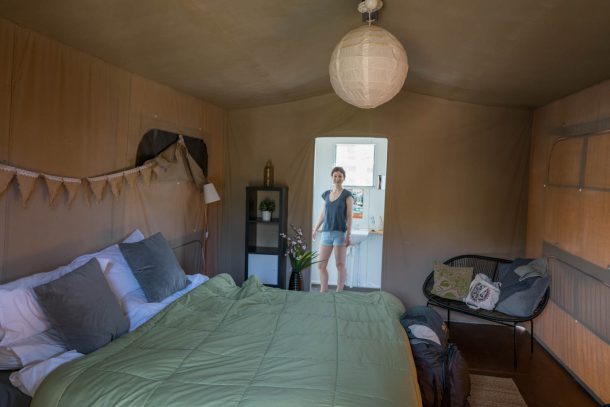
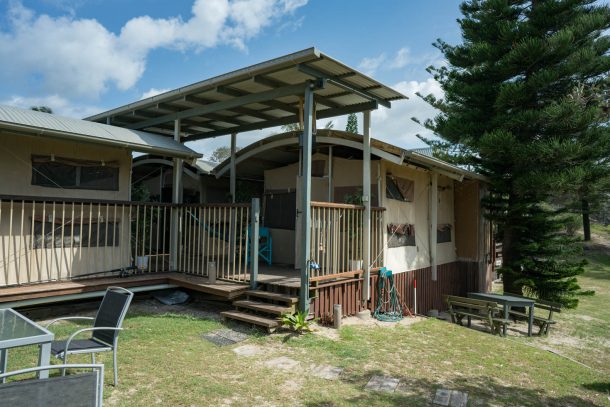
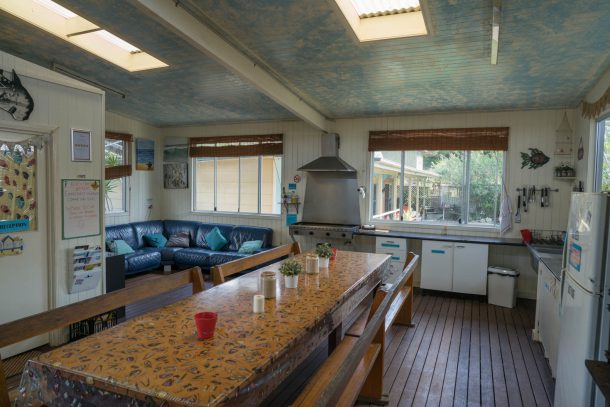
Highs:
Lows:
Leave a reply